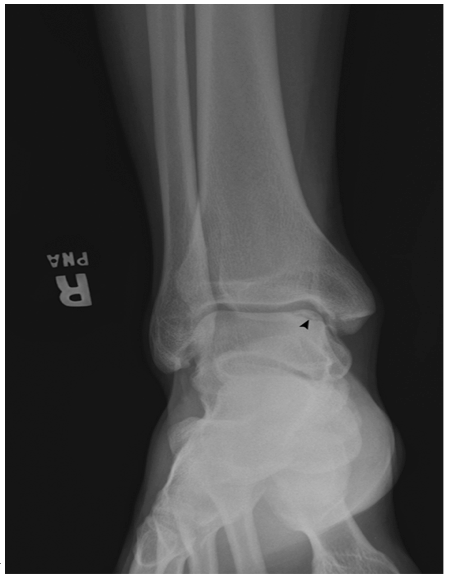

Physiotherapy to strengthen the ankle and lower limb.Use of ankle brace to protect the ankle while easing back into activity.Using a foot orthotics to better align the ankle.Usually, we aim to treat talar dome lesions conservatively. Treatment options for talar dome lesions? In most cases, an MRI scan will be a definitive diagnosis of a talar dome lesion. Many times, this diagnosis is based primarily on a thorough patient history. Symptoms for talar dome lesions may be intermittent, and pose a difficulty to diagnose. Occasional swelling of the ankle – especially when bearing weight, subsiding during rest.Occasional feeling of ankle being “stuck” or “catching” of ankle.Chronic deep pain in the ankle, usually worse with activity (especially during sports), and less with resting.Some signs and symptoms of a talar dome injury include: How do I know if I have a talar dome injury? In some cases, the ankle pain associated with a talar dome lesion can take months to surface following the precipitating event or injury. However, it can also be caused as a result of repeated microtrauma to the talus. This is typically caused by a traumatic event, such as an ankle sprain. Usually, there is variable involvement of the subchondral bone of the talus, and cartilage. It is also known as an osteochondral lesion of the talus. If any of these conditions arise then a doctor will talk you through the treatment options, which might involve a productive program of physical therapy, a course of medication, or surgery.Talar dome lesions are focal injuries to the talar dome – a part of a significant bone of our foot, the talus. Arthritis may develop in severe instances. In some cases the pain and swelling can remain, or limited foot motion can persist. Post-Injuryĭue to the manner in which the lesion can damage the ankle cartilage, problems can often continue after the injury has healed. The doctor may recommend one of many surgical procedures to remove loose fragments from the ankle this will result in clearing the way for recovery. An ankle brace can often help to minimise the risk of repeating the injury. If the injury is deemed 'unstable' and involves broken fragments of cartilage or bone, the course of action will depend on the doctor's assessment of the lesion. Anti-inflammatory pain medication, such as ibuprofen, can be useful for reducing pain and swelling. After this, physical therapy will help to maintain movement in the joint and gradually build up strength. The doctor may fit you with a cast in order to immobilise the ankle during this period it is essential to rest from any strenuous activity so as not to exacerbate the condition. The incidence of floating fragments of cartilage (or bone) can indicate a major lesion and might require surgery, but for more minor injuries there are several non-operative measures. Treatment will vary depending on the injury's severity. You will need to see a doctor to have the injury diagnosed.

For a detailed look at the causes of ankle sprains please see our relevant articles. Such injuries include ankle sprains and tendonitis if the cartilage does not fully recover from these (or other) ankle conditions then part of the cartilage can become unstuck and sit unnaturally within the ankle.

The osteochondral lesion is typically caused due to ankle trauma, whether directly – following quickly after an incident – or with another injury arising initially and subsequently causing the lesion. The ankle can also seem to lock into position and suffer from restricted movement. After a number of months (or sometimes longer), possible symptoms include persistent pain in the ankle which is worsened during activity and weight bearing, inflammation of the area which may also occur concurrently with activity, pronounced weakness in the ankle, and a click or feeling of rigidity while walking. The injury is regularly asymptomatic for a long period unless the lesion is severe. This is often provoked by an existing injury. When the cartilage and the talus below become injured, this causes an osteochondral lesion – meaning a lesion affecting both bone and cartilage. This dome is coated with a layer of strong cartilage to facilitate effective ankle movement. The ankle bone is called the talus, which is topped by the talar dome linking to the tibia (shin bone).


 0 kommentar(er)
0 kommentar(er)
